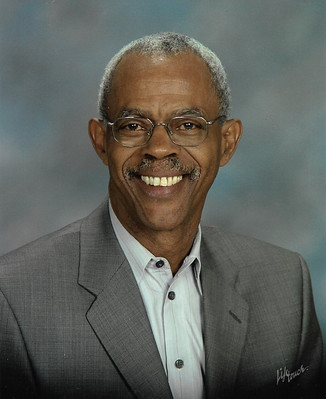THE ORANGEBURG MASSACRE: FEBRUARY 8, 1968
A Historical Retrospective
When South Carolina officers opened fire on a group of student demonstrators on February 8, 1968, three students died and Bobby Eaddy was among the nearly 30 others who were wounded. He would go on to serve in the United States Army during the Vietnam War era.
Although the Orangeburg Massacre was the first event of its kind on any United States college campus, it remains largely unrecognized in American history. The tragedy is among the historic collection of events that sustained the civil rights movement.
Bobby Eaddy
Orangeburg Massacre Survivor
March 17, 1950 — October 15, 2022
The First Event of Its Kind on a U.S. College Campus
The Orangeburg Massacre occurred two nights after efforts to integrate the All-Star Bowling Lanes—the city’s only bowling alley—erupted in violence, sending nine students and one city policeman to the hospital. On the night of February 8, 1968, students lit a bonfire in front of campus and state troopers arrived with the fire department to douse the flames. During the tense standoff, officers positioned themselves on the edge of campus and began firing at the students.
Samuel Hammond, Henry Smith and Delano Middleton were killed, and 28 others were wounded, including Bobby Eaddy. Although the tragedy was the first event of its kind on any United States college campus, it remains largely unrecognized in American history.
South Carolina State University is Changed Forever
Most of the students injured were shot in the back as they retreated. The officers claimed to have fired their weapons after hearing shots, though witnesses dispute those claims and no evidence was found to suggest the students possessed guns.
The bullet that struck Bobby Eaddy entered the back of his upper torso and traveled through his body until it stopped near his heart. The bullet could not be removed, so it remains in his chest as a permanent reminder of the night that three young men lost their lives. Nine officers were identified as having fired their weapons at the students. However, they were tried and acquitted in less than two hours. Civil rights activists were outraged by the verdict, but were more determined than ever to end the oppressive policies of the era.
Two years after the shootings, a student leader, Cleveland Sellers, Jr., was convicted of “inciting a riot” and served seven months of a one-year sentence before being released early for good behavior. He was the only person to serve jail time for the events related to the massacre.

Sustaining the Civil Rights Movement: 1968 to Today
In 1993, Sellers was issued a pardon by the South Carolina Probation, Pardon and Parole Board, and in 2003, South Carolina Governor Mark Sanford issued a long-overdue apology regarding the Orangeburg Massacre. Sellers served as the director of the African American Studies program at the University of South Carolina. His son, Bakari Sellers, served in the state legislature and is a CNN television analyst.
Legislation was introduced to create a formal commission tasked with making victims compensation recommendations; however, the legislation was not signed into law and the commission was not convened. The Federal Bureau of Investigation cited double jeopardy protections in 2007 when declining to reopen the case along with other unresolved civil rights matters.

ALTHOUGH THE ORANGEBURG MASSACRE IS THE FIRST EVENT OF ITS KIND ON ANY UNITED STATES COLLEGE CAMPUS, IT REMAINS LARGELY UNRECOGNIZED IN AMERICAN HISTORY.
Though it was the first event of its kind on any college campus, the Orangeburg Massacre is not well recognized like the tragic Kent State campus shootings that occurred two years later on May 4, 1970. Four Kent State students died and nine others were physically wounded by the National Guard while demonstrating against the expanding war in Vietnam. Days later, on May 15, 1970, state police officers killed two students and injured 12 others on the campus of Jackson State University.
The year 1968 was filled with tumultuous events that all but erased the Orangeburg Massacre from history. That year, Dr. Martin Luther King, Jr. and Robert F. Kennedy were assassinated and rioting broke out during the Democratic National Convention in Chicago.
Media coverage of the events in Vietnam and North Korea overshadowed the Orangeburg Massacre, allowing the story to be suppressed and falsely portrayed as a justified response to a violent student demonstration.
Instead of covering the Orangeburg shootings, national media focused on the Tet offensive, which began three days before the Orangeburg tragedy, and the capture of the U.S. Navy vessel The Pueblo weeks earlier.
While the tragedy was unthinkable, students at South Carolina State had not been absent from earlier civil rights struggles. Students at the university had a long history of peaceful activism, including protesting Orangeburg’s White Citizens Council, marching against segregation in 1960, and launching sit-in demonstrations just days after the first sit-ins were held in Greensboro, North Carolina. Students marching against segregation in Orangeburg had been dispersed with fire hoses and law enforcement officials had arrested 400 activists.
Each year since the Orangeburg Massacre, the university has held a ceremony to honor those involved. Markers on the campus now commemorate the victims of the shootings and identify the location where the tragedy occurred.
In 2001, Governor Jim Hodges spoke on behalf of the state and expressed deep regret for the events of February 8, 1968. In 2003, Governor Mark Sanford issued an apology. The Federal Bureau of Investigation cited double jeopardy protections in 2007 when declining to reopen the case along with other unresolved civil rights matters.
Bobby Eaddy
Orangeburg Massacre Survivor
South Carolina State University
Freshman Class of 1967
“As today’s world becomes more complex and interconnected, we must continue to improve our appreciation for each other’s differences and take action to ensure that human rights are afforded to all people throughout the world.”
Biography
March 17, 1950 — October 15, 2022
On February 8, 1968, Bobby Eaddy was shot by South Carolina Highway Patrol officers, in what has come to be known as the Orangeburg Massacre. Three students were killed and nearly 30 others were wounded that night on the campus of South Carolina State University after civil rights demonstrators were met with lethal force.
The bullet, shot into the back of his upper torso as students fought to end segregation, stopped near his heart and could not safely be removed by doctors. Bobby survived, yet carried the bullet lodged close to his heart for the rest of his life.
While the Orangeburg Massacre is the first event of its kind on any United States college campus, it remains largely unrecognized in American history. Despite its unfamiliar legacy, the lives of the survivors have been dramatically affected by the senseless violence that predated the Kent State and Jackson State tragedies.
Bobby enrolled at the historically black South Carolina State College in 1967 after graduating from Gibbs High School in Pamplico, South Carolina. He played on the college football team and studied physical education with the aspiration of becoming a coach.
He left SC State in the wake of the February 8, 1968, Orangeburg Massacre and went on to enlist for eight years of decorated service in the United States Army during the Vietnam War.

Bobby was a community and church leader throughout his life. Following his military service, he had a successful career in the private-sector where he broke several color barriers to enter management and executive-level positions. He was also an award-winning speaker who openly shares his first-hand account of the events surrounding the Orangeburg Massacre.
In addition to his professional success, Bobby was active in his church. He was a deacon and sang in choir at Greater Peace Missionary Baptist Church in Killeen (Fort Hood), Texas and Rohoboth Baptist Church in Columbia, South Carolina.
Bobby last resided in Columbia, South Carolina, 45 miles from where he watched his classmates perish and nearly lost his own life. He passed peacefully surrounded by family on Oct. 15, 2022, at the age of 72.
South Carolina State University posthumously honored Bobby with the Smith Hammond Middleton Social Justice Award on February 8, 2023, during the 55th Commemoration Ceremony of the shooting. He was also posthumously granted his Bachelor of Science degree in Physical Education on December 16 during the 2022 Fall Commencement Convocation.
Bobby was married to Patsy Gilbert Eaddy, a career teacher with National Board Certification. She also attended South Carolina State University and is an alumna of the University of Mary Hardin-Baylor. Bobby is also survived by the couple’s two sons and one daughter—Andre, Derran and Latisha.
As a beloved member of his community, Bobby will always be remembered by the large family, church, military, and university communities that he lovingly cultivated throughout his life.
Read more biographical information.




